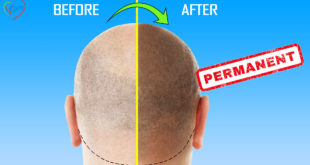In our previous post, we discussed the Basics of Diabetes Mellitus. In today’s article, we will look into the Types of Diabetes Mellitus and the Predisposing or the Risk Factors that can increase the risk of diabetes.
Please read this post till the end and you can avoid or prevent the occurrence of Diabetes Mellitus and also it helps in understanding the treatment of diabetes.
Now you know the mechanism of development of Diabetes Mellitus, we will proceed with the different types of diabetes. If you haven’t read my previous episode on how diabetes develops, please click right here.
What are the Types of Diabetes Mellitus?
There are actually three types of Diabetes Mellitus:
- PREDIABETES
- TYPE 1 or Insulin Dependant Diabetes which constitutes about 5 to 10 percent of diabetics, and
- Type 2 Diabetes which is the most common type.
Prediabetes is a condition in which blood glucose levels are too high to be considered normal but not high enough to be labelled diabetes. This condition is diagnosed if the fasting blood glucose level is between 100 milligram/decilitre (mg/dL) and 125 mg/dL, OR if the blood glucose level 2 hours after a Glucose Tolerance Test is between 140 mg/dL and 199 mg/dL.
So, Why is this important? This is very important because Pre-diabetics are prone to a higher risk of future diabetes as well as heart disease.
Can you prevent the development of Diabetes at this stage?
Yes, you can by reducing your body weight by 5 to 10% through diet and exercise. This can significantly reduce the risk of developing future diabetes. If you are around the age of 30 to 50 and have not yet tested your blood glucose levels, get a simple Fasting blood sugar level done. You can even use home glucometers or get it tested at a hospital lab!
What is Type 1 Diabetes Mellitus?
It was formerly called insulin dependant diabetes or or juvenile-onset diabetes.
In type 1 diabetes, your pancreas doesn’t produce the hormone insulin, because the body’s immune system attacks the insulin-producing cells of the pancreas, and more than 90% of them are permanently destroyed. Only about 5 to 10% of all people with diabetes have type 1 disease. Most people who have type 1 diabetes develop the disease before age 30, although it can develop later in life.
What is Type 2 Diabetes?
It was formerly called non– insulin-dependent diabetes or adult-onset diabetes. This is the most common type of Diabetes.
In type 2 Diabetes, Pancreas produces the hormone insulin, but, your cells do not respond to the insulin the way they should. The body develops resistance to the effects of insulin, so there is not enough insulin to meet the body’s needs. As type 2 diabetes progresses, the insulin-producing ability of the pancreas decreases and hence advanced type 2 diabetics have to take insulin injections.
Type 2 Diabetes usually begins in people older than 30 and becomes progressively more common with age.
Some important Risk Factors or predisposing factors that can lead to Type 2 diabetes:
- Genetics: Type 2 Diabetes tends to run in families.
- Race: People of certain racial and ethnic backgrounds like blacks, Asian Americans, American Indians, and people of Spanish or Latin American ancestry are more prone that the Whites.
- OBESITY: This is a major risk factor for developing type 2 diabetes, and 80 to 90% of people with type 2 diabetes are overweight or obese. Because obesity causes insulin resistance, obese people need very large amounts of insulin to maintain normal blood glucose levels. If you are a diabetic on treatment, remember, the dose of insulin depends on this factor.
- People with Sedentary Lifestyle and who do not exercise.
- In fact, smokers are 30–40% more likely to develop type 2 diabetes than non-smokers.
- People with High Blood Pressure.
- People with low HDL cholesterol, e the good cholesterol.
- People with high blood triglyceride or fat levels.
- Women who had gestational diabetes or delivered a large baby weighing 9 pounds or more.
- People with Depression
- People who had PCOS, i.e Polycystic Ovarian Syndrome.
- People who have Acanthosis nigricans. This is a condition characterized by dark, thick, and velvety skin around your neck or armpits.
Stay Healthy!!
 AlopeciaRx – Treatments for Alopecia (Hair Loss & Baldness) The Virtual Care Hospital
AlopeciaRx – Treatments for Alopecia (Hair Loss & Baldness) The Virtual Care Hospital




